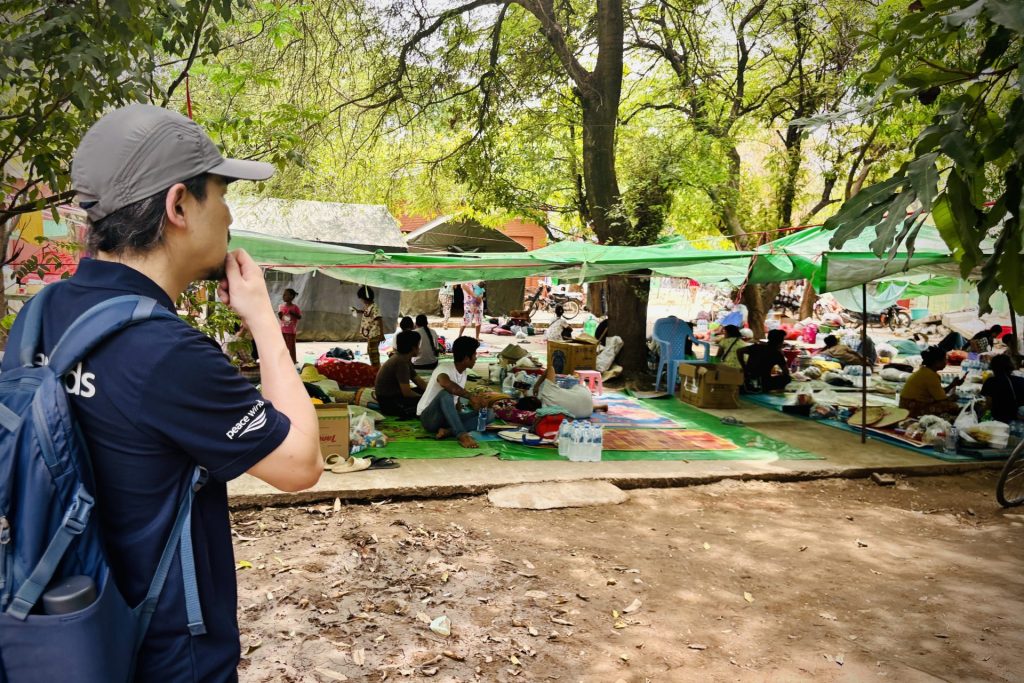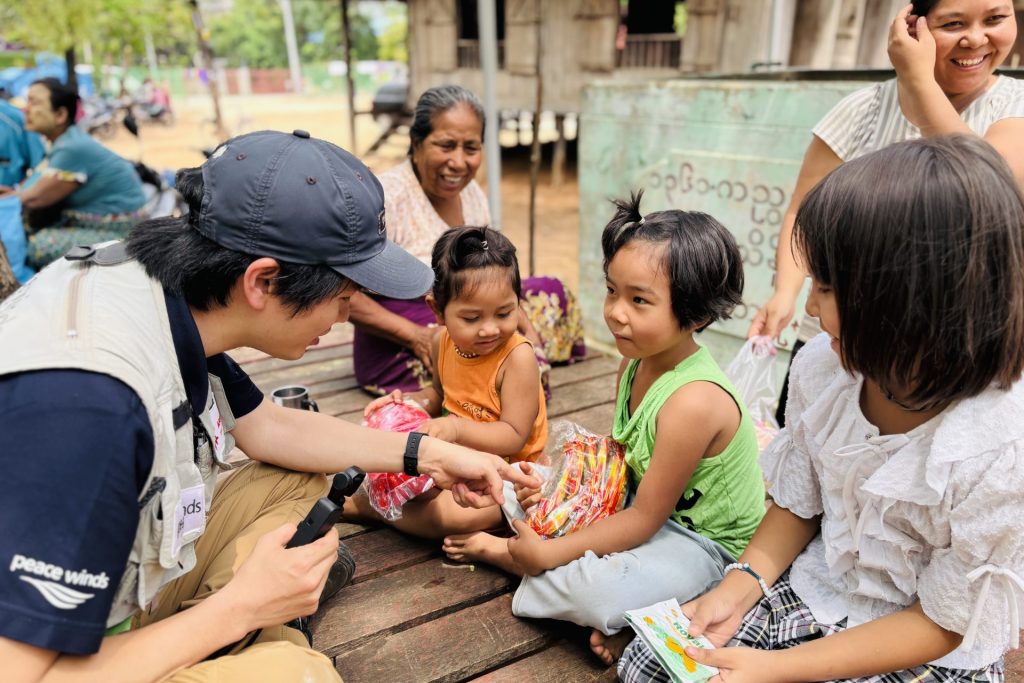Long-term aid needed in Myanmar for survivors who face an uncertain future
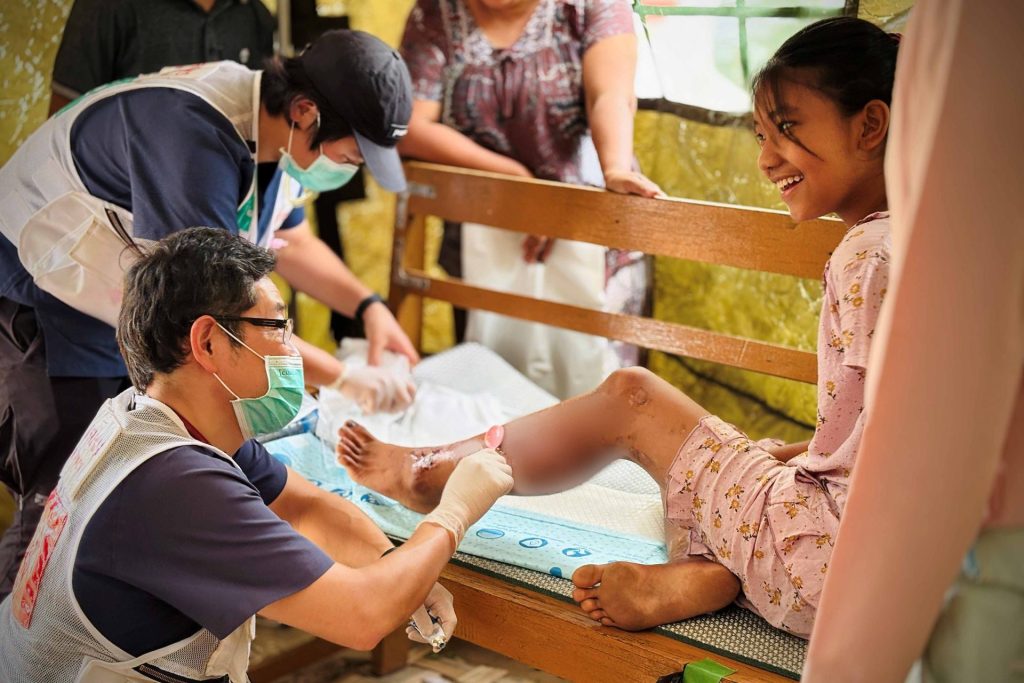
Two weeks ago, Peace Winds set up a field clinic to provide emergency medical care to earthquake survivors in Sagaing, the hardest-hit area of Myanmar. Even seasoned disaster responders like the team members were shocked to see the level of destruction and the number of people in need of medical attention here.
“Many patients are still living in their homes with untreated injuries, but the number of people we know about is likely just the tip of the iceberg,” said Mitsuki Kitagawa, a nurse with Peace Winds ARROWS disaster medical team. “We have hoped that our clinic will become a trusted place for those people to easily access.”
Kitagawa and the team have been treating 20 to 30 patients per day. Their injuries range from fractures to open wounds, and many who did not receive care quickly enough require treatment for infections. To make the situation more challenging, Myanmar is entering its hottest season, with temperatures hovering around 100°F and humidity exceeding 70%. This creates an environment that is physically and mentally exhausting for both patients and healthcare workers. As a result, Kitagawa and the team are also treating many patients for heat-related illness, dehydration, and upper respiratory infections as a result of environmental factors.
Sagaing is famous for its temples, but many historical sites were destroyed in the disaster. Some temples are now being used as evacuation centers. In the last week, aftershocks have caused an influx of displaced individuals at evacuation centers. Among them are families whose homes are still standing but worry whether they are a safe place to sleep.
“Right now I’m just scared,” said one woman. “My house has remained intact, but I still don’t want to sleep inside. If there’s another earthquake at night, I’m sure I won’t be able to escape.”
Other survivors worry about how they will meet their families’ needs in the long term as they work to rebuild. One woman in her 40s who is now sheltering in a temple shared her story with Peace Winds.
“I have been relying on this temple since my house collapsed in the earthquake. Before the disaster, I worked as a motorbike taxi driver to support my family, but my motorbike broke and I lost my job.
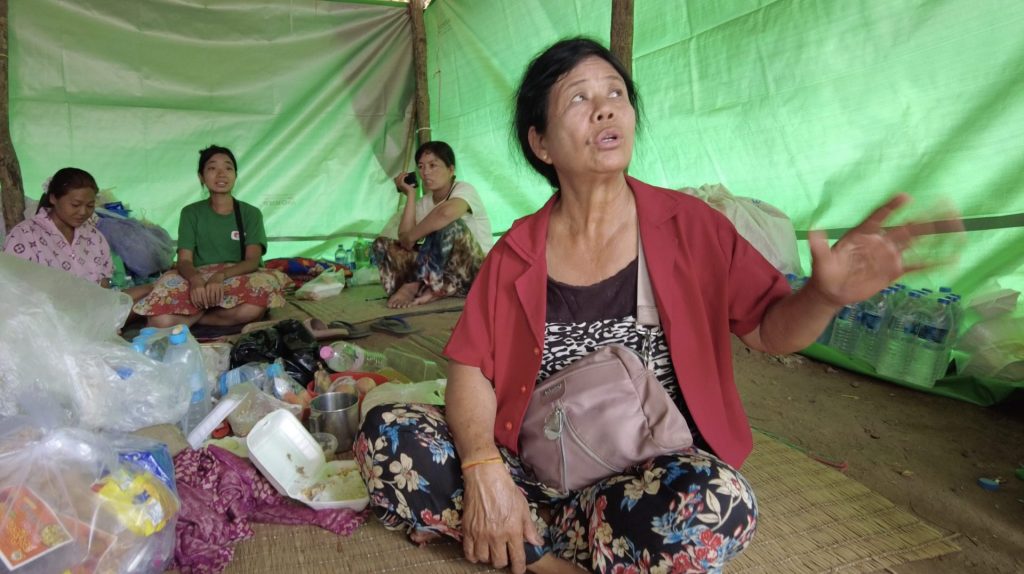
“Since the earthquake, prices have gone up. The price of gasoline has nearly doubled. We have to pay for the services of contractors to demolish our collapsed houses and remove the rubble, so we need money for that, and after that, we have to think about building our own houses. If we stay in the evacuation center, we will have somewhere to sleep, water, and food, but we don’t know how long the head priest will allow us to stay. We don’t know what the future holds.”
The head priest at a temple that is now home to more than 400 individuals shared similar concerns.
“Evacuees are now receiving adequate food, but I don’t think this support will last forever,” he said. “What’s really frightening is, how are we going to feed these evacuees when the donations stop? We are prepared to look after them for the time being, but we can’t do that forever.”
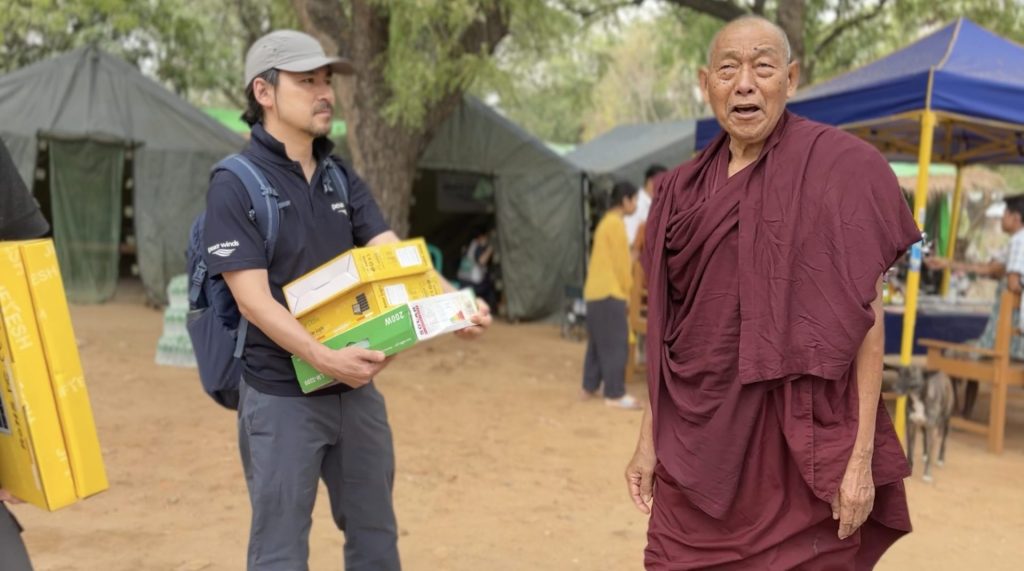
Survivors who have been treated for injuries will also require long-term rehabilitation and follow-up care. This is especially true for patients with disabilities or limited mobility, pregnant patients, children, and the elderly.
The Peace Winds team has been doing everything it can to make evacuation life a little easier. At the field clinic, staff set up a coloring book and origami station for patients to use while they wait, and healthcare workers handed out stickers to children.
“We provide more than just medical support,” said Dr. Mototaka Inaba, leader for Peace Winds’ Myanmar earthquake response. “Medical care alone cannot possibly cover all that is needed during a large-scale disaster. A place to live in peace, healthy food to eat, a path to rebuilding one’s life – what each disaster survivor needs is different. It’s important for us to think about providing emotional support with a long-term perspective.”
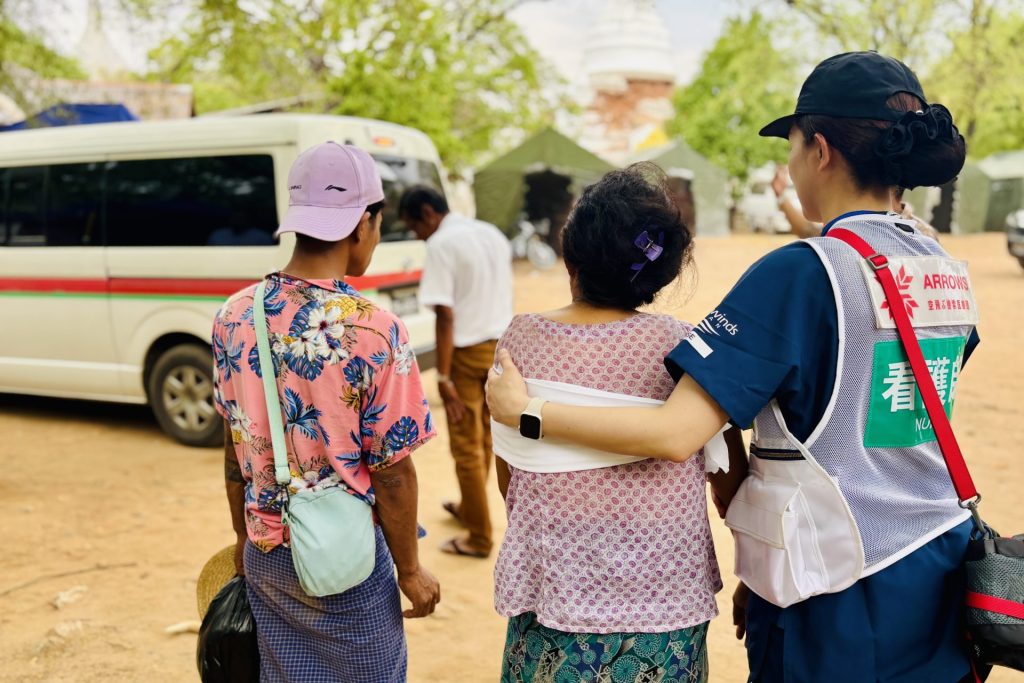
On April 17, the Peace Winds disaster medical team was slated to hand over responsibility for the clinic to another group of doctors and nurses and rotate out of the country. Other Peace Winds staff have already started providing emergency supplies to survivors living in evacuation centers, and they are in the process of scaling this up. They are working with several local partner organizations to distribute shelter materials, medical supplies, and other necessary items and will expand these efforts over the medium- and long-term. Donations to our work in Myanmar will help us continue to save lives through this work.
Additional Updates from Myanmar:
- Myanmar emergency team reflects on hardships of earthquake response (May 7, 2025)
- Distributing emergency supplies for Myanmar earthquake survivors (April 25, 2025)
- Urgent Medical Care for Earthquake Survivors in Myanmar (April 10, 2025)
- Peace Winds Responds to Deadly Myanmar Earthquake (March 29, 2025)


